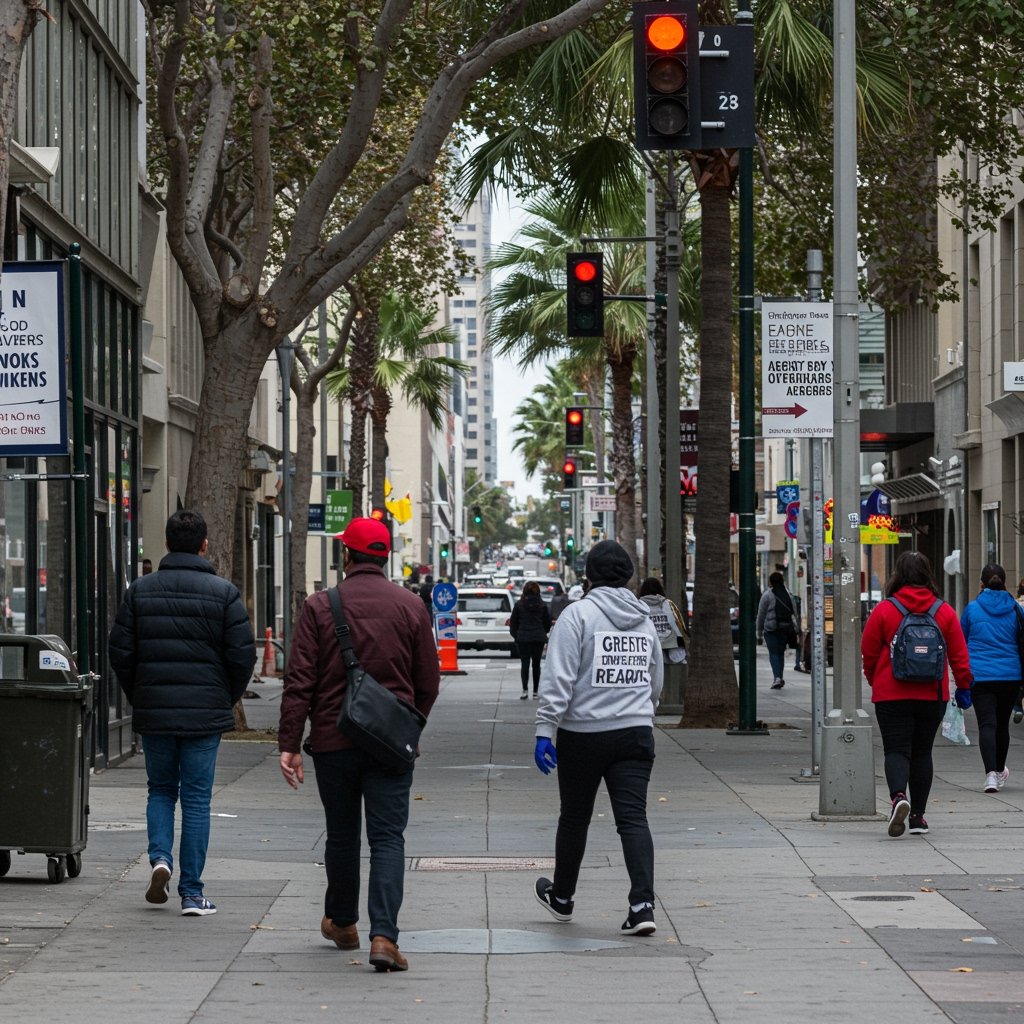California Gears Up for Landmark Gig Worker Pay Changes
California is on the cusp of implementing a significant new regulatory framework set to redefine compensation standards for food delivery gig workers across the state. Effective March 1, 2025, a state-level mandate will establish minimum pay rates and require health benefit contributions for delivery drivers, impacting potentially hundreds of thousands of individuals and major technology platforms alike.
This forthcoming regulation represents a pivotal moment in the ongoing national conversation surrounding the classification and treatment of gig economy workers. While proponents argue it is a crucial step towards providing essential protections and a more stable income floor for a workforce that often lacks traditional employee benefits, the changes also bring complexity and potential challenges for the platforms, businesses that rely on delivery services, and even some workers themselves.
Details of the New Regulatory Framework
The core of the new state standards centers on two primary components: minimum pay and health benefits. The regulations are designed to mandate a base pay tied specifically to active delivery time. This differs significantly from pay models that primarily compensate per completed delivery or based on total time logged in an app, aiming instead to ensure compensation is directly linked to the time a driver spends actively engaged in tasks like picking up and dropping off orders.
In addition to the per-minute or per-hour active time pay floor, the framework also requires platforms to provide quarterly stipends for eligible workers’ healthcare costs. The specifics of eligibility criteria for these stipends will be crucial for both platforms and drivers to understand, but the mandate signals a clear move towards ensuring that delivery personnel have some level of support for health-related expenses, a common gap in gig work arrangements.
These new rules are expected to impact an estimated 200,000 delivery personnel statewide. This substantial number underscores the broad reach of the regulation and its potential to reshape the economics of food delivery for a significant segment of California’s workforce. The platforms most directly affected are expected to include gig economy giants like DoorDash and Uber Eats, though the exact scope of which companies are covered will depend on the final regulatory language and interpretation.
Industry Reactions and Concerns
The impending implementation has not been met without apprehension from various stakeholders, particularly within the business community. Restaurant owners and industry groups have voiced considerable concerns about potential fee increases being passed onto their businesses. Restaurants often operate on thin margins, and any additional costs associated with delivery services, whether through higher commission rates or new fees, could significantly impact their profitability and operational sustainability.
Industry representatives argue that while the goal of better worker pay is understandable, the method of achieving it through mandated costs on platforms may ultimately trickle down and burden the local businesses that rely on delivery services to reach customers. They worry this could lead to difficult decisions regarding menu pricing, reliance on third-party platforms, or even staffing.
Perspectives from Workers and Advocates
The workforce itself presents a more complex picture, with differing views on the new standards. Advocates for gig worker rights have largely hailed the move as a crucial step towards better worker protections. They emphasize that minimum pay rates and health stipends can provide much-needed stability and a safety net for individuals who currently face unpredictable earnings and lack traditional employee benefits like paid leave or employer-sponsored health insurance.
However, among the drivers themselves, the reaction is mixed. While many welcome the prospect of higher and more predictable earnings, some worry the changes could lead to reduced flexibility or fewer delivery opportunities. Gig work’s appeal for many lies in its flexible nature, allowing individuals to set their own hours and work around other commitments. Concerns exist that platforms, facing increased labor costs, might reduce the number of available delivery slots, implement stricter scheduling, or deactivate drivers more readily to manage expenses, thereby eroding the very flexibility that attracts workers to the platform in the first place.
Enforcement and The Path Forward
The success and practical impact of the new framework will heavily depend on its enforcement. Local governments across California are currently in the process of outlining enforcement procedures to ensure platforms comply with the new pay and benefit mandates. This presents a logistical challenge, as tracking compliance for a large, dispersed workforce operating through digital platforms requires sophisticated monitoring mechanisms and clear reporting requirements.
Questions remain about how compliance will be audited, what penalties will be levied for non-compliance, and how individual workers will be able to verify they are receiving the correct pay and benefits. The collaboration between state regulators, local enforcement agencies, and potentially worker advocacy groups will be critical in navigating these complexities.
As the March 1, 2025 deadline approaches, the lead-up is expected to involve continued dialogue among platforms, state and local authorities, worker groups, and the restaurant industry. The implementation of this state-level regulatory framework is poised to significantly alter the landscape of food delivery work in California, balancing the goal of improved worker welfare with the economic realities and operational models of the gig economy.


















